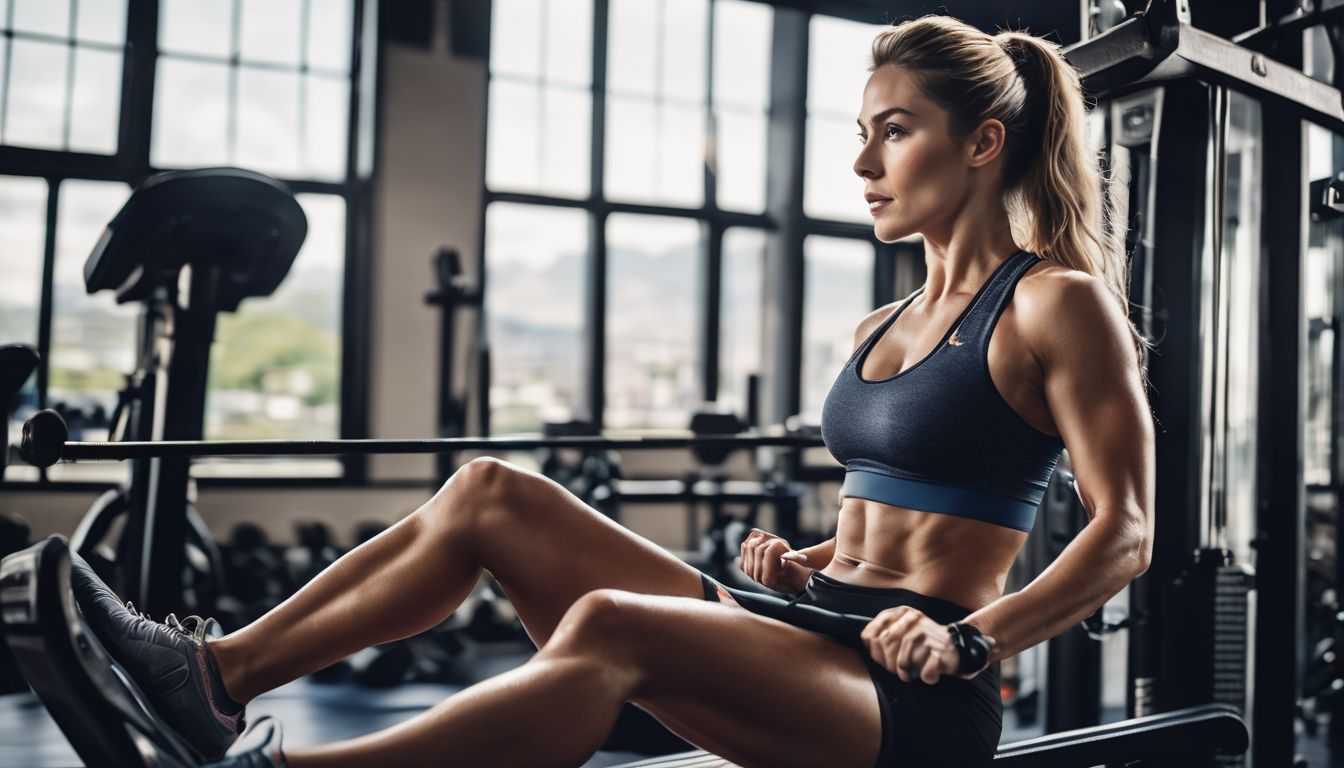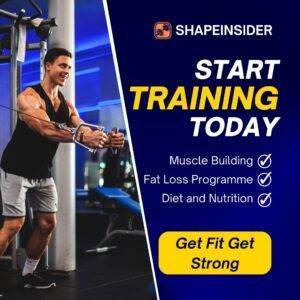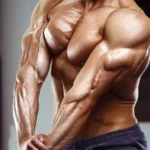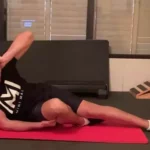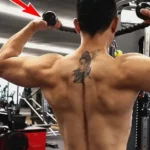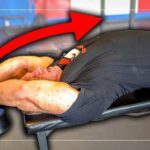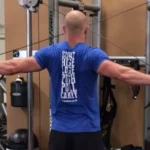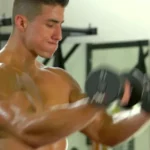Are you struggling to target your lower body muscles effectively during workouts? The leg press cable exercise might just be the solution you’re looking for. Did you know that the leg press can help strengthen and develop multiple muscle groups at once? In this article, we’ll explore the benefits of the leg press cable, how to do it correctly, and its impact on muscle development. Get ready to take your lower body workouts to the next level with the leg press cable!
Explanation of Leg Press exercise

The leg press exercise is a powerful way to build up your lower body. You push weight away from your body using your legs. This move works out your glutes, quads, and hamstrings mainly.
It’s done on a leg press machine where you sit down and push the loaded weights with your feet.
Doing the leg press can make you stronger for other exercises like squats and deadlifts. It helps grow muscles by increasing stress on them. The great thing about this exercise is that you use heavy weights without putting too much strain on the rest of your body.
Also, if one of your legs is stronger than the other, leg presses can help fix that by making both sides work hard.
Overview of muscle groups worked
Leg press exercises are great for hitting the big muscles in your legs. When you push on a leg press machine, your quads work hard to straighten your knees. But it’s not just about the front of your thighs; this machine also gets your glutes into action as you lift and lower the weight.
Hamstrings help out by bending your legs back down, while calves get their workout by pushing through your feet. This means leg presses make a lot of important muscles stronger all at once.
Using heavy weights can really boost muscle growth, especially in places like your quads and glutes. The leg press makes sure they’re working hard every time you exercise. Plus, since these muscles are getting so strong, they’ll help with other moves too — like squats or deadlifts where power from the legs is key.
Regular workouts on the leg press will keep those lower body muscles fit and ready for whatever challenge comes next!
Benefits of the Leg Press
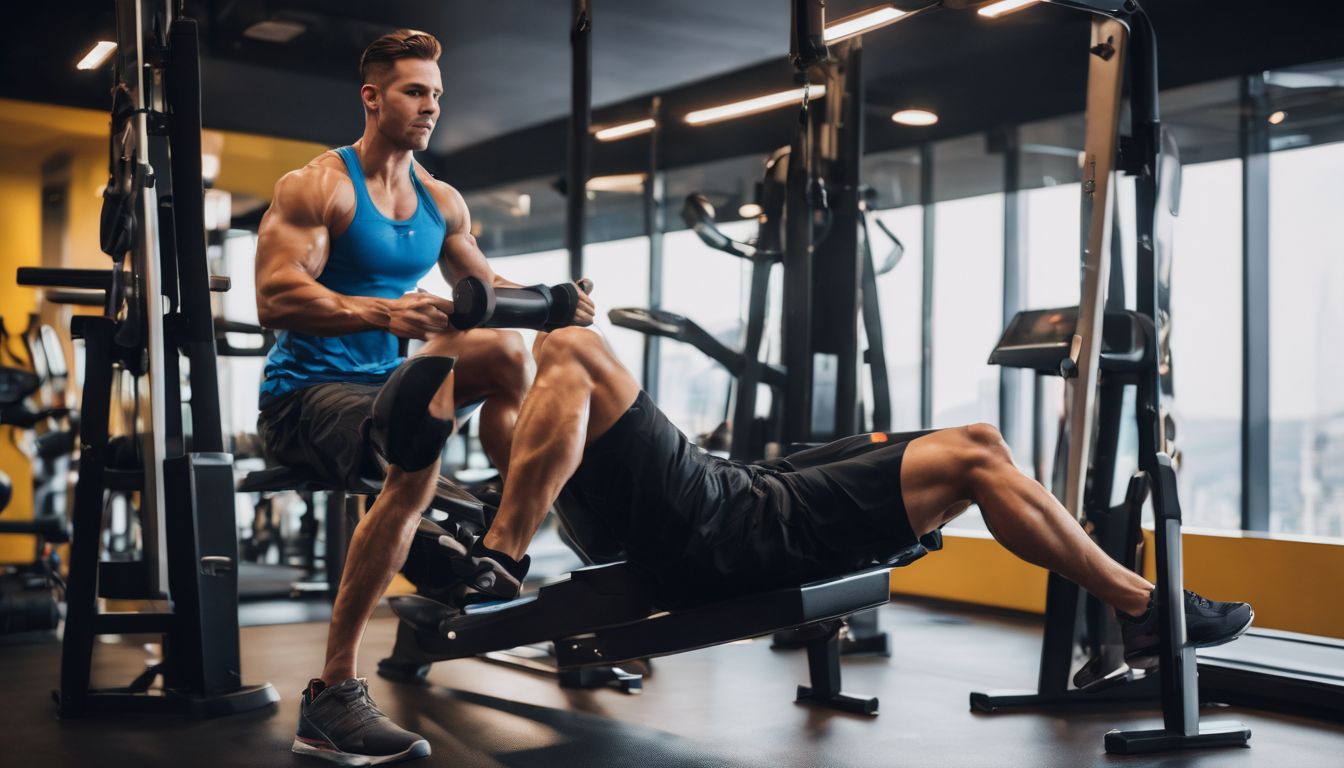
The leg press offers a variety of benefits, from lower body isolation and development to minimal need for balance, making it an ideal exercise for beginners and those looking to build strength.
To learn more about the many advantages of the leg press, keep reading!
Lower body isolation and development
Leg press exercises are great for making your lower body muscles strong and well-shaped. When you use a leg press machine, it really works your glutes, quads, and hamstrings hard. This means that each of these important muscle groups can grow stronger without needing other parts of your body to help too much.
For anyone starting out or wanting to focus on their legs more, leg presses let them build up their strength safely. Because the machine supports you while you work out, you can push yourself with heavy weights and not worry about balance.
If building muscle is your goal, using the leg press cable might be just what you need. It puts a lot of good stress on leg muscles which helps them get bigger over time. This makes sure all sides of your legs are getting better equally—no more worries about one side being stronger than the other! Plus, ladies who want firm and toned legs often find this exercise really helpful for shaping their glutes too.
Minimal need for balance
Some exercises require a lot of balance, which can make them hard for beginners. The leg press is different because it lets you sit and push with your legs without worrying about keeping your body steady.
This means you can focus on working out your leg muscles without the extra challenge of staying balanced. It’s great for new people at the gym who want to build strong legs and for those who might not have good balance yet.
With this machine, all you need to do is set the weight and start pressing with your feet. You don’t have to hold weights or stand up like in other exercises, which often need more balance skills.
This allows anyone, even if they are just starting or coming back from an injury, to feel safe while still being able to lift heavy and get stronger.
Beginner-friendly
The leg press exercise is beginner-friendly, making it ideal for those new to strength training. It provides a controlled environment where individuals can build lower body strength with minimal risk of injury.
This makes the leg press machine accessible even for those who are just starting their fitness journey. Additionally, the ability to easily adjust the weight on the leg press machine allows beginners to gradually increase their resistance as they strengthen their muscles over time.
The leg press is an excellent tool for developing foundational lower body strength and building confidence in using gym equipment, providing a smooth entry into resistance training for novices.
Versatility and adjustability
The leg press machine offers versatility and adjustability, allowing for various foot placements and angles to target different lower body muscles. This flexibility makes it suitable for individuals with specific strength or rehabilitation needs, as the resistance can be easily adjusted to accommodate a wide range of fitness levels.
Additionally, the ability to perform unilateral leg presses provides the opportunity to address muscle imbalances or asymmetries in strength. The versatility of the leg press machine extends to its adaptability for different workout styles, such as incorporating supersets or drop sets, enhancing overall training efficiency.
This adaptability also allows individuals recovering from injuries or with limited mobility to safely engage in lower body strengthening exercises without putting excess strain on joints.
Improves squat and deadlift
Additionally, the leg press exercise significantly contributes to improving your squat and deadlift performance. By targeting the quadriceps, hamstrings, and glutes, the leg press helps in developing overall lower body strength and muscle endurance.
This can directly translate into increased stability and power when performing squats and deadlifts, leading to enhanced lifting capability and reduced risk of injury during these compound movements.
Regular inclusion of leg press workouts can help individuals overcome weak points in their squat or deadlift technique by strengthening key muscles utilized in these exercises.
Able to lift heavy weights
Improving squat and deadlift form, the leg press machine is especially advantageous for lifting heavy weights. It allows individuals to progressively load their lower body muscles without necessitating intricate balance or extensive core stabilization.
This capability to lift heavy weights with controlled movements can significantly contribute to muscle strength and hypertrophy in the quadriceps, hamstrings, and glutes. As a result, it is an ideal exercise choice for those seeking to enhance lower body muscular endurance and power while minimizing potential joint stress.
Additionally, it’s crucial in reinforcing overall lower body muscle development by providing the opportunity to work with substantial resistance loads that promote improved strength gains over time.
Can be used at any point in a workout
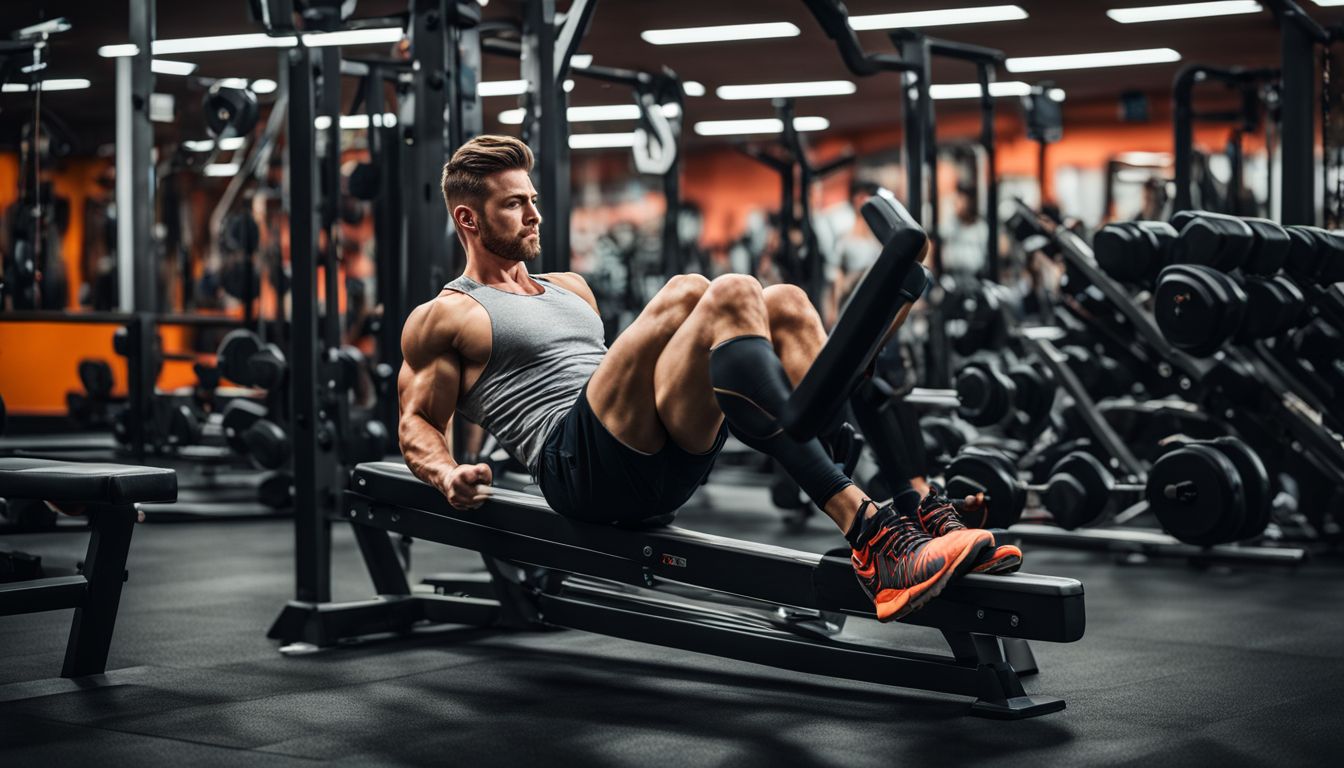
Since the leg press allows individuals to work with heavy weights with less stress on the central nervous system, it can be used at any point in a workout. This means you can include the leg press exercise early in your routine to pre-exhaust muscles or towards the end for a final burnout.
Due to its versatility and minimal need for balance, it lends itself well as a suitable choice regardless of where it fits into your training session.
The leg press is also beneficial during strength workouts as it targets multiple lower body muscle groups simultaneously, making it an ideal addition at different stages of your fitness regimen.
Promotes strong bones and injury prevention
The leg press exercise promotes strong bones and helps prevent injuries by strengthening the lower body muscles, including the quadriceps, hamstrings, and glutes. As these muscles become stronger, they provide better support to the bones and joints in the legs, reducing the risk of fractures and other related injuries.
Additionally, regular use of the leg press machine can help improve overall stability and balance, further contributing to injury prevention during physical activities.
Furthermore, engaging in weight-bearing exercises like the leg press can also enhance bone density. This is crucial for preventing conditions such as osteoporosis, especially in women who are more prone to developing this condition.
How to Do the Leg Press
Ensure proper form by placing your feet shoulder-width apart on the platform, then slowly lower the weight until your knees are at a 90-degree angle before pressing back up. To learn more about effective leg press technique and maximize your workout, keep reading for detailed explanations and tips.
Proper form and foot placement
When doing the leg press, ensure your back is flat against the padded seat to avoid straining your lower back. Place your feet shoulder-width apart on the footplate and position them so that they are parallel or slightly turned out.
Ensure that your knees stay in line with your toes throughout the movement to protect them from unnecessary stress and strain.
Proper form and foot placement during the leg press exercise can help target the desired muscle groups effectively while minimizing the risk of injury. It’s essential to maintain stability by keeping your feet firmly planted on the footplate throughout each repetition.
Common mistakes to avoid
- Placing feet too high or too low on the footplate, which can strain the knees and transfer the workload to the wrong muscles.
- Locking out the knees at the top of the movement, relieving tension from the targeted muscles and potentially causing injury.
- Curving the lower back or lifting the hips off the seat, which shifts focus away from the legs and increases risk of back strain.
- Using excessive weight that compromises proper form and range of motion, reducing effectiveness and increasing injury risk.
- Failing to control the descent phase, leading to a lack of muscle engagement and potential for sudden strain on joints.
- Positioning feet too close together or too far apart, limiting optimal muscle activation and potentially causing discomfort or imbalance.
- Neglecting to maintain consistent breathing throughout each repetition, which can impact stability and diminish overall performance.
Remember – focusing on proper form is crucial for maximizing leg press benefits while minimizing the risk of injury.
Leg Press Variations
Explore different variations of the leg press exercise to target various muscle groups and add variety to your lower body workout routine. Read on for creative ways to enhance your leg press workout.
Unilateral leg press
The unilateral leg press is a great variation to target each leg individually, helping to correct muscle imbalances and develop strength evenly. By using one leg at a time, it challenges the stabilizing muscles and improves balance and coordination.
This variation also allows for a greater range of motion compared to traditional bilateral leg presses, leading to increased muscle activation in the quads, hamstrings, and glutes.
Incorporating unilateral leg presses into your workout routine can help address weaknesses or asymmetries while promoting overall lower body stability and strength development.
Resistance band leg press
The resistance band leg press is a versatile variation of the traditional leg press exercise. By anchoring one end of the resistance band behind you and placing the other end on your foot, you can mimic the movement of a leg press.
This variation adds resistance throughout the entire range of motion, engaging your muscles more intensely. It targets similar muscle groups as the standard leg press but also engages smaller stabilizing muscles due to its dynamic nature.
The added benefit is that it allows for more control over the difficulty level by adjusting the tension in the resistance band, making it suitable for all fitness levels.
Wall sit
Moving on from the resistance band leg press, another effective lower body exercise is the wall sit. This static exercise targets your quadriceps, hamstrings, and glutes while also engaging your core muscles for stability.
To perform a wall sit, find an empty wall space and lean against it with your back flat. Lower yourself until your thighs are parallel to the ground, forming a 90-degree angle at the knees.
Hold this position for as long as you can maintain proper form.
Engaging in regular wall sits can help strengthen your lower body muscles, improve endurance, and enhance overall leg strength. It’s a convenient exercise that requires minimal equipment and space, making it accessible for people of various fitness levels.
Smith machine squat
The Smith machine squat is a variation of the traditional barbell back squat. It allows for controlled movement along a fixed path, which can be beneficial in learning proper squat form and targeting specific muscle groups like quads, glutes, and hamstrings.
The machine provides stability and can be especially useful for beginners or individuals with limited mobility. By adjusting foot placement and body positioning, it’s possible to emphasize different muscle groups, making this a versatile exercise for lower body strength development.
Using the Smith machine for squats permits safer solo lifting sessions as the bar’s guided movement lowers the risk of injuries. This exercise promotes full lower-body engagement while allowing lifters to work with heavier weights without an increased nervous system strain.
Barbell back squat
The barbell back squat is a fantastic exercise for building lower body strength. It primarily targets the quadriceps, hamstrings, and glutes. As a compound movement, it also engages the core muscles for stability and balance.
This exercise not only helps in developing muscle mass but also enhances overall functional strength, making daily activities easier to perform. By using heavy weights during barbell back squats, you can significantly increase bone density and improve joint health.
With proper form and technique, the barbell back squat can effectively activate multiple muscle groups simultaneously, promoting better coordination and balance throughout the body.
Leg Press Muscles Worked
The leg press primarily targets the quadriceps, glutes, hamstrings, calves, and shins. If you’re interested in diving deeper into how these muscles are worked during the leg press exercise, keep reading to learn more.
Quads
The leg press exercise effectively targets the quadriceps, commonly known as the quads. This large muscle group located at the front of your thighs is crucial for various daily movements like walking, running, and climbing stairs.
Strengthening the quads through leg presses can enhance overall lower body strength and contribute to better athletic performance. With regular leg press workouts, you can develop well-defined and powerful quads, improving both functional abilities and aesthetic appearance.
The primary function of the quadriceps is to extend or straighten the knee joint. Engaging in leg press exercises helps to specifically isolate and challenge these muscles, leading to increased strength and endurance.
Glutes
The glutes, or the gluteal muscles, are crucial in the leg press exercise. These muscles play a significant role in extending the hips when pushing the weight away from the body. Additionally, they aid in stabilizing the pelvis during this movement.
Strengthening and activating these muscles through leg presses can contribute to improved athletic performance and overall lower body strength. As one of the primary muscle groups engaged during leg presses, strengthening these muscles can lead to enhanced power generation for various physical activities.
Regular engagement of your gluteal muscles through leg press exercises can promote better posture and stability, reducing the risk of injury during daily movements as well as athletic endeavors.
Hamstrings
The hamstrings are a group of three muscles located at the back of your thigh. When you use the leg press machine, the hamstrings get activated to help extend your hip and flex your knee.
This exercise helps strengthen and develop the hamstring muscles, promoting better lower body stability and balance. Additionally, working on this muscle group can assist in reducing the risk of injury and enhancing athletic performance.
Regularly engaging your hamstrings during leg press exercises can lead to improved muscle strength and definition in this area, contributing to overall lower body power and agility.
Calves and shins
The leg press targets the quadriceps, hamstrings, and glutes primarily. However, it also works the calves and shins to some extent. The pressing motion of the exercise causes your calf muscles to engage as they assist in pushing the weight away from your body.
Additionally, as your feet are placed on the footplate during the leg press, this action engages your shin muscles to stabilize and support the movement.
Strong calf muscles contribute to stability while walking or running. Engaging these muscles through exercises like the leg press can help prevent injuries and improve overall lower body strength.
Similarly, activating your shin muscles during a leg press can enhance ankle stability and support proper posture during various physical activities.
The Difference Between Leg Presses and Squats

The leg press and squats are both effective lower body exercises, but they target different muscle groups and have varying impacts on the joints. Understanding the differences can help in choosing the right exercise for specific fitness goals.
Different muscle activation
Leg presses primarily activate the quadriceps, hamstrings, and glutes. Compared to squats, leg presses minimize the involvement of stabilizing muscles like the core and lower back.
This can be beneficial for those looking to specifically target their leg muscles without engaging other muscle groups extensively. Additionally, using different foot positions on the leg press machine can shift focus between various leg muscles, such as placing feet higher on the platform to emphasize glute activation or lower for increased quadriceps engagement.
The leg press allows individuals to isolate their lower body muscles more effectively compared to squats due to its fixed movement pattern and support provided by the machine. This is advantageous for those seeking targeted strength development in specific muscle groups without requiring as much stabilization from surrounding muscle groups.
Impact on joints
The leg press can place significant stress on the knee joints, especially when performed incorrectly or with excessive weight. Over time, this can lead to potential joint strain and even injury.
However, by maintaining proper form and controlling the amount of weight used, the impact on the joints can be minimized. Additionally, a wide foot stance targets different muscles and may reduce stress on the knees.
This understanding emphasizes the importance of proper technique and moderation when using the leg press machine to protect the joints from unnecessary strain while still reaping its benefits for muscle development and strength.
The Leg Press vs. Other Gym Machines
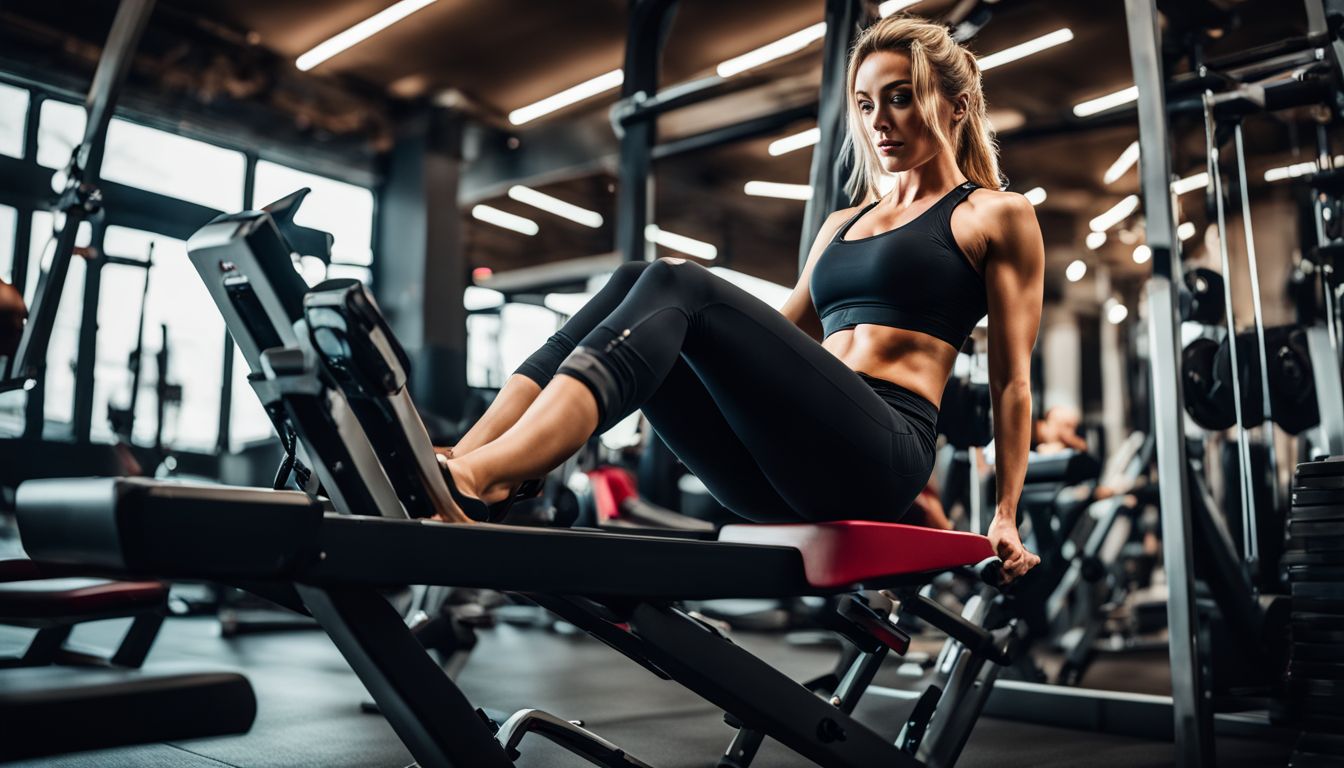
The leg press offers unique benefits compared to other gym machines, especially in terms of targeting the lower body muscles effectively. It can be particularly helpful for individuals with specific fitness goals related to building strength and muscle mass in the legs.
Benefits of the leg press compared to other machines
The leg press machine offers distinct benefits compared to other machines. It provides a safe and controlled environment for lifting heavy weights, especially for those with lower back issues or limited mobility. Additionally, the leg press emphasizes the quads and glutes more effectively than other lower body exercises. The exercise also allows for unilateral training, aiding in addressing muscle imbalances and promoting symmetrical development. Moreover, it minimizes stress on the lower back while still targeting crucial lower body muscles.
- The leg press encourages proper form and reduces the risk of injury associated with free weight exercises.
- It offers versatility by allowing variations like unilateral leg presses and different foot placements to target specific muscles.
- The machine is suitable for beginners as it helps build leg strength without requiring advanced balancing skills.
- Unlike squats or deadlifts, the leg press isolates the lower body muscles without engaging stabilizing muscles excessively.
- This exercise promotes bone density and joint health through consistent application of resistance to the legs.
How it can help with specific fitness goals
The leg press machine is a valuable tool for various fitness goals. For individuals aiming to increase muscle mass and strength in their lower body, the leg press provides an excellent option.
It targets major muscle groups such as the quadriceps, hamstrings, and glutes, promoting overall lower body development. Additionally, the leg press can be beneficial for those looking to improve muscular endurance and stability in the legs.
Moreover, it helps in strengthening bones and preventing injuries by enhancing lower body stability.
Furthermore, for individuals with specific aesthetic goals like toning or shaping their glutes and thighs, incorporating the leg press into their workout routine can effectively target these areas.
Conclusion
In conclusion, the leg press exercise offers numerous benefits for strengthening and toning the lower body muscles. It provides a beginner-friendly option for those looking to develop their leg muscles with minimal need for balance.
The versatility and adjustability of the leg press make it suitable for individuals at any fitness level. Moreover, its ability to target specific muscle groups like quads, glutes, and hamstrings makes it an essential addition to any lower body workout routine.
By incorporating variations and maintaining proper form, individuals can maximize the benefits of the leg press machine in their strength training regimen.
